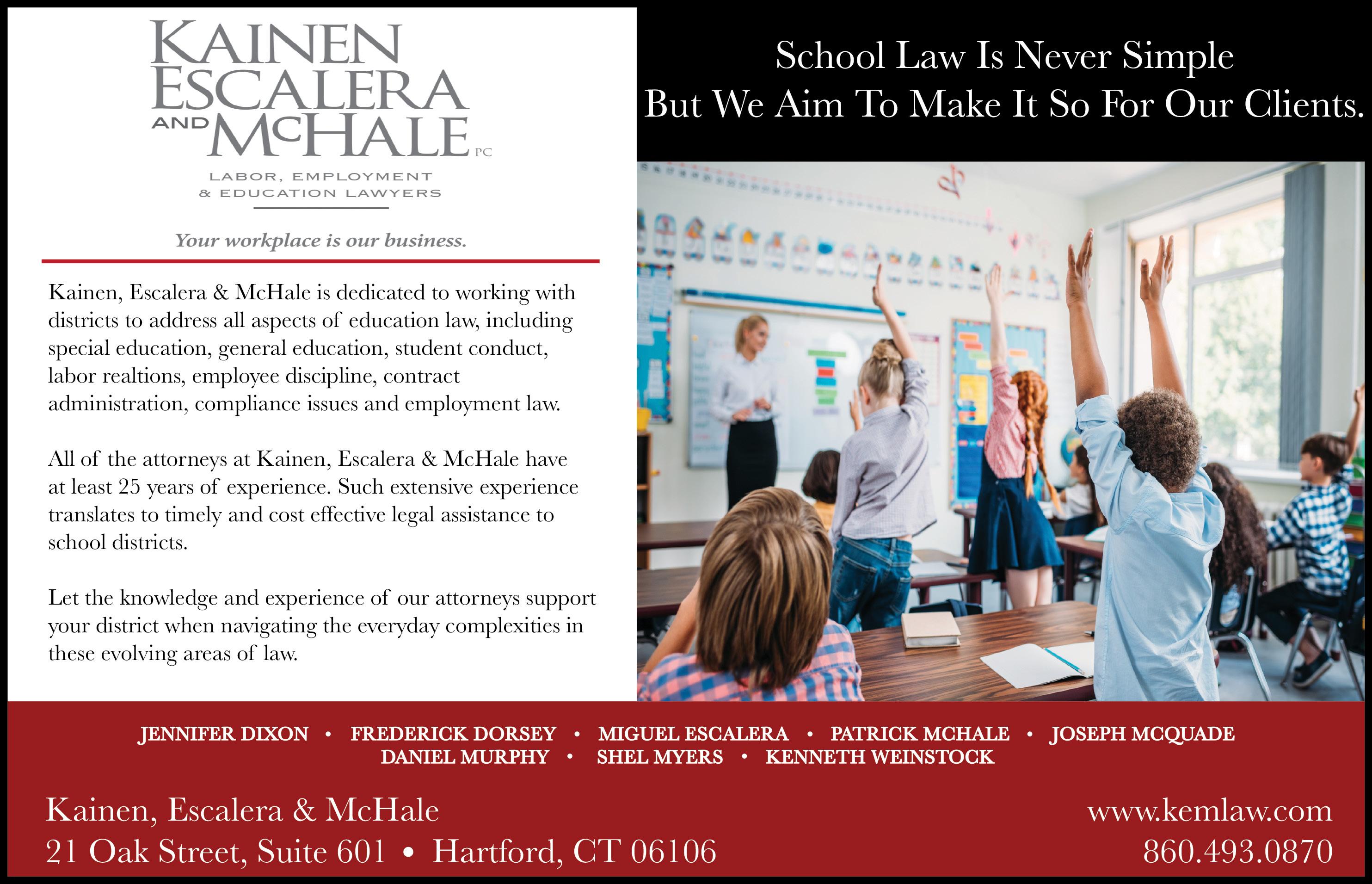
2 minute read
An Introduction to “Protected Classes” in State Law
Conrad Vahlsing Sr. Staff Attorney, CABE
Education leaders understand that discrimination against students and staff is not tolerated in Connecticut public schools. But where does that legal framework reside? And who is protected, and from what?
Advertisement
This article will provide an introduction to the network of state laws that protect students and staff so that all may have a better understanding of how Connecticut’s antidiscrimination laws work.
State Antidiscrimination Laws Reside in Several Locations
Connecticut’s antidiscrimination laws reside in state statutes, public acts, and executive orders. And court and agency decisions can interpret these laws in specific ways.
As an introductory note, our state statutes are grouped together thematically, in “titles.” For example, Title 10 (“Education and Culture”) is important as it contains many of the laws pertaining to K-12 public schools.
Title 10 contains an antidiscrimination law specifically for students in our schools: Section 10-15c. This statute provides students (more accurately, children eligible to attend public school) with an “equal opportunity to participate in the activities, programs and courses of study” in school by being free from discrimination based on a list of specific qualities, aka protected classes.
Currently, the protected classes in Section 10-15c are: race, color, sex, gender identity or expression, religion, national origin, sexual orientation or disability.
And the definition of race was recently expanded with the CROWN Act (Public Act 21-2, enacted in 2021), where race is defined as “inclusive of ethnic traits historically associated with race, including, but not limited to, hair texture and protective hairstyles,” with a further definition of “protective hairstyles.”
Title 46a is important to our public schools as it contains antidiscrimination laws regarding employment.
Title 46a (“Human Rights”) contains protections in four main arenas, employment, housing, the enjoyment of goods-services-facilities (the latter commonly referred to as public accommodations), and credit.
Executive orders from the governor can also modify antidiscrimination protections. For example, in 2017, then-Governor Dannel Malloy issued Executive Order 56, which contained several important points regarding students. The EO focused on the protected classes of sex, sexual orientation, and gender identity or expression, and stated that Connecticut “has become a national leader in protecting civil rights,” and that our state laws provide “greater protections for transgender people than federal law.”
As for what Executive Order 56 imposed, it stated that bathrooms and locker rooms in public schools and institutions of higher learning should be considered places of public accommodation. And this designation then prohibits discrimination in such places based on sex and gender identity or expression.
Each Antidiscrimination Law Protects Different People, from Different Harms
Sections of Connecticut’s statutes apply to different arenas: Title 10 for K-12 public education, Title 10a for our state system of higher education, and Title 46a for human rights, as important examples.
Section 10-15c (within Title 10), discussed above, designates protected classes among students and children eligible to attend public school that protect against discrimination in educational “activities, programs and courses of study.”
Within Title 46a, Connecticut’s human rights statutes, laws create protected classes in specific arenas, and the groups of classes may differ. For example, the protected class of “familial status” only applies to housing transactions. But note that in the section on employment, an employer or labor organization cannot inquire as
See PROTECTED CLASSES page 12







